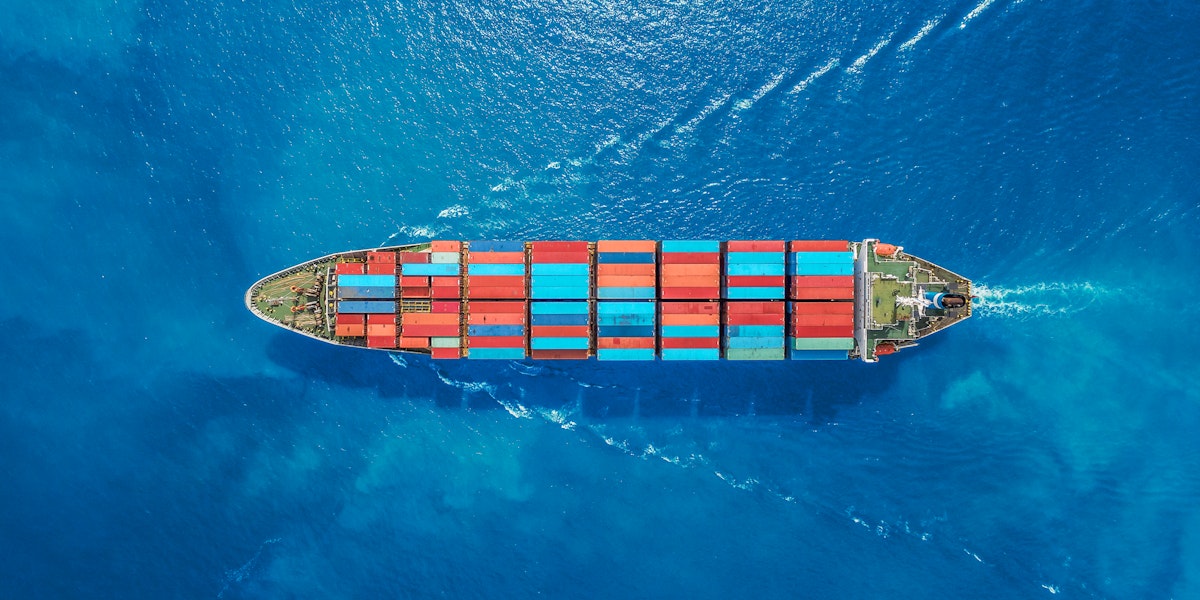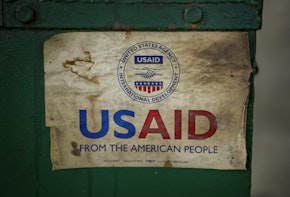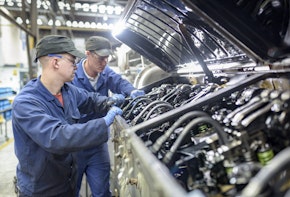Almost a decade ago, the late Ethiopian prime minister Meles Zenawi described a “nightmare” he had for his country: “an Egyptian agenda that is financed by Gulf money.” Zenawi, an ex-rebel and an intellectual, was expressing his fear of expanding Egyptian influence in the Horn of Africa, made possible by the financial power of the Gulf monarchies. “Imagine how much weaker Ethiopia’s position will be with the [United Arab Emirates] controlling every port we use,” Zenawi warned.1 In 2019, in the midst of dramatic Middle Eastern expansion into Red Sea ports, Zenawi’s words seem almost prophetic.
But Zenawi was only half correct. His nightmare has come true, sans the bogeyman of Egypt—it is a Gulf agenda financed by Gulf money. Today, the Emirates and other Gulf states control a vast array of commercial ports and military bases along the coast of the Red Sea and the Gulf of Aden, transforming the political geography of the Horn of Africa. And the scenario he imagined seems to be a subplot in a much broader reorientation.
A map showing ports belonging to DP World and its subsidiaries in the Red Sea region. Source: Rohan Advani/Datawrapper
Most analyses tend to read the changing politics of the Red Sea and the Horn of Africa as simply the result of competition between rival Gulf states, especially in the wake of the 2017 Qatar diplomatic crisis.2 While this framing helps to explain some recent developments, it does not explain why Gulf expansionism has specifically taken place in these regions. The interests and actions of commercial entities are equally important in understanding what Gulf policy looks like on a more molecular level.
This report examines the issue of Gulf expansionism through the case study of the Emirates-based company Dubai Ports World (DP World), a leading global port operator and logistics giant. DP World is an aggressively expanding privately owned enterprise with strong links to Emirati ruling families. In many ways, it is spearheading the aspirations of both the Emirati private and public sectors in the Red Sea and the Horn. Perhaps more than any other commercial or government entity, the story of DP World illustrates a convergence of state and capital that has echoes in many other Gulf states.
In turn, the story of DP World—and of the interests of Gulf capital more generally—illuminates the factors that influence state formation and fragmentation in the Horn of Africa and the Red Sea. Such fragmentation is, of course, a dire concern. Somalia has been shattered for nearly thirty years, and is only becoming increasingly splintered. The war in Yemen, nearly half a decade old, rages on. Ethiopia and Eritrea, bitter and sometimes warring rivals, have been involved in a fragile rapprochement since the summer of 2018.
The precise nature of Emirati and Gulf power affects all these future-shaping processes. Private Emirati infrastructure projects in the Horn of Africa are not neutral economic projects. Rather, these ports, highways, security installations, and water and sanitation facilities are intimately linked to Emirati foreign policy. They are important mechanisms for the expansion of both Emirati capital and power. This expansion is, in essence, imperial—it is a marriage of international economic and political ambitions. This is not yet imperialism on the scale of, say, nineteenth-century Britain, but it is imperialism, nonetheless. Its aim is to exert political influence in the region and aggressively control and expand key trade routes and markets. Further, it is a hallmark of imperialism that the trade and strategic interests of Gulf states are not distinct. Rather, they are co-constitutive—they establish and reinvent each other.
In the Red Sea and the Horn, the nexus of state and commercial involvement in counterterrorism, counter-piracy, maritime security, and supply chain protection reveals fundamental realities—both about those regions, and about why Gulf state rivalries are so potentially volatile. Further, understanding that Emirati policy in the Red Sea and the Horn follows the logic of empire helps us better confront some of the drivers of disastrous state fragmentation in the region.
The Birth and Rapid Growth of Dubai Ports World
DP World traces its roots to the establishment of Port Rashid, Dubai in 1972, named after Dubai’s ruler at the time, Sheikh Rashid bin Saeed Al Maktoum. In 1979, Sheikh Rashid completed the ambitious Jebel Ali Port, and in 1991, the two ports were brought together under the directorship of the newly formed, state-owned Dubai Ports Authority. As the Emirates increased its financial clout, largely from growing oil-based wealth, the country witnessed rapid urban and demographic changes, and extensive infrastructural development. During this time, Jebel Ali grew dramatically, and the combined ports handled more than a million shipping containers’ worth of cargo (termed twenty-foot equivalent units, or TEUs, in the industry). Increasingly becoming a regional and international hub for trade, Jebel Ali also developed as a favorite port of call for the U.S. Navy. In fact, following the United States-led wars in Afghanistan and Iraq (beginning in 2001 and 2003, respectively), Jebel Ali profited immensely from the presence of Halliburton employees, private mercenaries, and American soldiers en route to Baghdad and Kabul. It has been described as the busiest commercial terminal in the world for the United States’ wars in the Middle East.3 But while Jebel Ali grew to be a key logistical hub underpinning U.S. militarism in the region, corporate and state leaders looked beyond the shores of the Emirates for important investment opportunities. In 1999, the government established Dubai Ports International (DPI) to manage and operate container terminals outside the Emirates in Jeddah (Saudi Arabia), Visakhapatnam (India), Dolareh (Djibouti), and Constanta (Romania), on the Black Sea coast.4 And in 2005, DPI and Dubai Ports Authority merged to form DP World, becoming one of the largest port operators in the world.
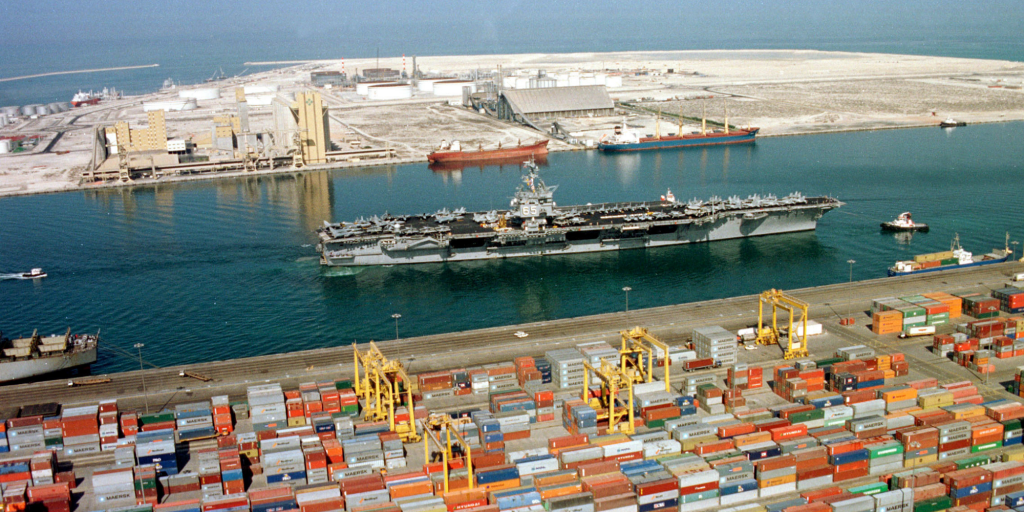
The historical trajectory of DP World suggests a tight-knit relationship with state power, and its current structure and leadership is also deeply wedded to the Emirates’ ruling families, blurring the lines distinguishing the state from private capital. Overseeing the management of one of Dubai’s primary revenue-generating infrastructures, DP World is the lifeblood of Dubai’s ruling classes. As such, those classes have a vested interest in shaping the future of the company. DP World’s CEO, Sultan Ahmed bin Sulayem, comes from one of Dubai’s most prominent business and political families. In fact, his father was a key advisor to the ruling Al Maktoum family.5 Moreover, Dubai World—a global holding company that is an investment arm of the government of Dubai—owns 80 percent equity in DP World, essentially giving the ruling family ultimate control.6 In further evidence of the interlocking relationship between state and private capital, bin Sulayem was himself the chairman of Dubai World; the chairman of Istithmar World, the investment arm of Dubai World, which specializes in private equity; and the chairman of Nakheel, the global property development company incorporated by the government in 2001 to establish and develop the real estate sector in Dubai.7
This is not to suggest an equal standing between CEOs and Dubai’s ruling families. A year after the 2009 Dubai debt crisis, the ruler of Dubai, Sheikh Mohammed bin Rashid Al Maktoum, removed bin Sulayem as chairman of Nakheel and Dubai World (though bin Sulayem retained his position as chairman of DP World).8 The Dubai ruler replaced bin Sulayem with his uncle, Sheikh Ahmad bin Saeed Al Maktoum, as chairman of Dubai World; Al Maktoum also appointed his close confidants Mohammed Al Shaibani and Ahmad Al Tayer as board members.9 In fact, the debt crisis served as a moment to solidify and concentrate ruling class power in the Emirates. Members of Dubai’s historic mercantile families, such as Al Tayer and Al Lootah, gained prominent positions in companies such as Dubai World, Nakheel, and Istithmar. Meanwhile, at DP World, where Bin Sulayem had previously overseen the extensive growth of the company, he resumed the company’s two-pronged strategy: acquiring rivals and bidding aggressively for port concessions.10
The Emirates insists that DP World is a private enterprise, but its activities move in lockstep with the country’s strategic interests.
But 2009 undoubtedly marked a rupture in intra-Emirati relations. Following Dubai’s crucial $10 billion bailout from oil-rich Abu Dhabi, the latter tightened its grip over political decision making in the country. While political decision making in the federal monarchy of the Emirates remains relatively opaque, researchers and commentators generally agree that Abu Dhabi has taken the lead following the financial crisis.11 Although DP World insists that it operates independently from Emirati foreign policy, the changing atmosphere has clearly affected the firm as well. The Emirates “always say[s] DP World is a private company and is acting out of commercial interests,” said a Western diplomat quoted in a 2018 International Crisis Group report. “But clearly those interests align with Emirati foreign policy.”12
The interlocking relationships between state and private capital, the growing authority of Abu Dhabi over political decision making, and an increasingly expansionist Emirati foreign policy have all served to ensure that the activities of DP World continue to move in lockstep with the “strategic interests” of the Emirates.
Commercial Interests in the Red Sea and the Horn
Following the Arab uprisings that began in 2010, and especially in the wake of the destructive Saudi Arabia- and Emirates-led war in Yemen, which began in 2015, the Emirates has led a concertedly aggressive foreign policy. The rise of China’s globally ambitious Belt and Road Initiative, Indian ambitions in the Indian Ocean, and Western states’ efforts to retain military hegemony in the region, have also meant that Gulf states are positioning themselves as mediators of maritime routes and territorial hinterlands surrounding the Arabian Peninsula, as scholar of Gulf political economy Adam Hanieh has explained.13 As such, Emirati strategic interests and commercial interests have developed in tandem, like a helix.
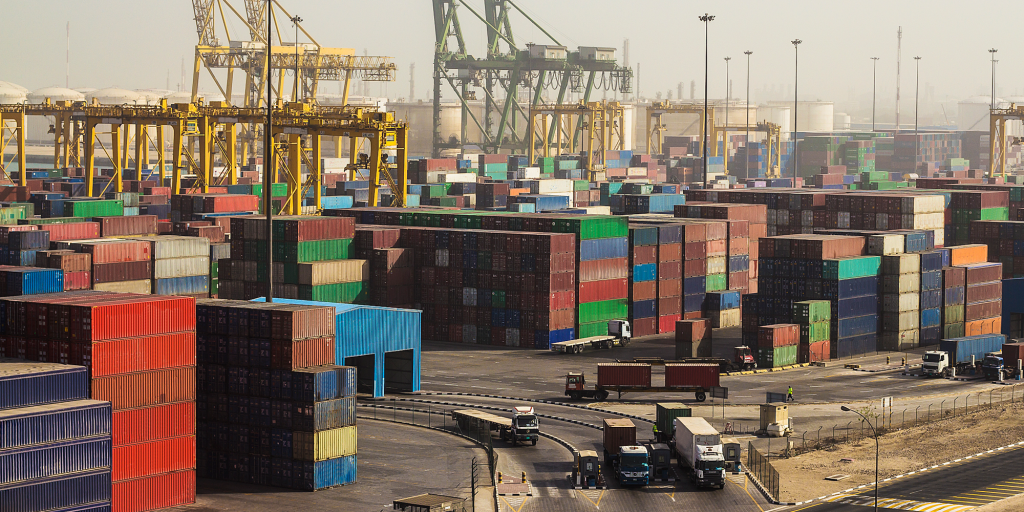
In order to fully understand why commercial and strategic interests have dovetailed so closely in the Emirates, it is worth untangling some of the distinct features of Emirati commercial interests in the Red Sea and the Horn, especially prior to 2015. Commercially, the Horn of Africa has been an important market to capture for a range of Emirati conglomerates and other investors based in the countries of the Gulf Cooperation Council (GCC). In the middle of the first decade of this century, companies based in the GCC aggressively bought farmland in countries such as Sudan and Ethiopia in an attempt to shield themselves from food insecurity and commodity price volatility. The Emirates, which imports approximately 90 percent of its food, sought to improve its food security by centralizing capital and exerting control over entire supply chains, from farm to shelf.14 Powerful conglomerates such Al-Dahra, flush with cash, were able to purchase vast swathes of land in the Horn. In addition to agriculture, Gulf-based companies made significant investments in the Red Sea and the Horn of Africa in manufacturing, construction, real estate, and telecommunications.
However, many of these expanding investments were predicated on robust trade infrastructures between the Gulf and the Horn. Ethiopia, with a population of more than 100 million and an economy that has grown an average of more than 10 percent a year for the last fifteen years, is one of the largest and fastest growing economies in all of Africa, let alone the Horn—and thus an attractive destination for Gulf investors.15 However, Ethiopia is entirely landlocked. Developing port infrastructure in Ethiopia’s coastal neighbors thus became a cornerstone for Gulf commercial expansion. As such, one of the first overseas investments that DPI (precursor to DP World) made during its phase of global expansion was in Djibouti. In 2000, DPI and the government of Djibouti established a joint venture and signed a twenty-year concession to operate the Port of Djibouti.16 Six years later, DP World signed a thirty-year concession with the government to design, build, and operate the Doraleh Container Terminal at the port. With a capacity to handle 1.25 million TEU, it became the most technologically advanced container terminal on the African continent.17 For Ethiopia, the port was a lifeline. Some 95 percent of trade destined for Ethiopia passed through the Port of Djibouti, with DP World responsible for handling operations.18 But Ethiopian leaders became cautious about their overreliance on a single port and company.19 Notwithstanding Ethiopian fears, access to the Horn has continued to be a key pillar for Emirati and GCC commercial expansion.
Another commercial mainstay for the Emirates—but more importantly, for Dubai and DP World in particular—is the maintenance of the Jebel Ali Port as the preeminent transshipment and trading hub in the Indian Ocean. Accounting for 33 percent of Dubai’s GDP and employing 15 percent of the emirate’s workforce, the Jebel Ali Port and Free Zone continuously generate significant cash flows for DP World.20 With a handling capacity of 22.1 million TEU, service to 140 other ports, the largest and busiest maritime terminal in the Middle East, and the ninth-largest container terminal port worldwide, Jebel Ali’s leading regional and global position appears incontestable.21 However, Jebel Ali’s success may, ironically, be the biggest threat to its primacy. Across the GCC, governments and global port operators, often through public–private partnerships, are replicating the Jebel Ali model by developing large-scale port infrastructure with intermodal transport networks such as airports, roads, rail, and free zones. These projects are centered primarily around economic diversification and intra-GCC regional integration. But Rafeef Ziadah, a scholar of Middle East political economy, argues that the political hierarchies of the GCC and the competitive pressures of capitalist economies raise the possibility of port overcapacity, duplication of development initiatives, and inter-rivalry.22 Qatari and Omani ports’ emulation of the Jebel Ali model may overtake the handling capacity of the Jebel Ali Port itself. Even within the Emirates, Jebel Ali faces stiff competition from the development of Abu Dhabi’s Khalifa Port and its enormous free zone.
Gaining a competitive edge, however, does not only boil down to increasing handling capacity. While undoubtedly significant, the regional importance of ports is also defined by the ways in which they seamlessly weave together different ports, logistical corridors, free zones, and trade routes. On a local level, DP World has gone to great lengths to oversee, control, and extract rents from different points of the supply chain. In December 2014, DP World agreed to purchase the Jebel Ali Free Zone for $2.6 billion, thereby integrating logistical functions and gaining ownership of a revenue-generating infrastructure that accounts for more than 20 percent of Dubai’s GDP.23
In the breadth of its growth, DP World is singular in the Middle East.
The company also sees global and regional expansion as a way to underscore the preeminence of Jebel Ali, stifle potential competitors, and sustain a competitive bottom line. In the breadth of its growth, DP World is singular in the Middle East. By expanding port developments and pursuing a tactic of aggressive port acquisition, DP World is better situated to crowd out potential competitors and maintain Jebel Ali as the dominant port for smaller feeder ports in the surrounding zones, particularly in the Arabian Sea and the Red Sea. For example, when the Yemeni government signed a deal with DP World to develop and run the Port of Aden, there were accusations that DP World was purposely running the Yemeni port under full capacity to maintain the preeminence of Jebel Ali.24 In the Red Sea, one of DP World’s initial expansions was the establishment of a container terminal in Djibouti. Given that approximately 10 percent of global maritime trade (cargo worth $750 billion) passes through the Red Sea, acquiring ports throughout its littoral is clearly of the utmost importance to the company.25 This was undoubtedly a major consideration in DP World’s initial expansion into Djibouti. Not only do these port expansions reproduce the global significance of Jebel Ali—they also provide DP World with the opportunity to tap into the revenues that emanate from one of the most lucrative trade routes in the world.
Counter-Piracy and Counterterrorism
Expansion in the waters surrounding the Arabian Peninsula has profound strategic considerations and implications. Port acquisition, logistics integration, and increased shipping lines are ultimately preconditioned on the security of maritime trade routes. The policing of these maritime routes and combating of piracy have pronounced imperial precedents. During the colonial era, Britain used its navy to impose its empire’s political hegemony in the Indian Ocean and the Persian Gulf under the banner of protecting free trade and in pursuit of the abolition of slavery.26 Contemporary geopolitics today are, of course, markedly different from those of nineteenth-century British imperialism. However, legally fluid maritime spaces remain sites of imperial contestation and cooperation. This is not to suggest any insincerity on the behalf of the Emirates and other Gulf states in their counterterrorism and anti-piracy rhetoric. But neither have other imperialist powers always been insincere in their justifications. It is simply a quality of imperial logic that political and commercial goals abroad converge.
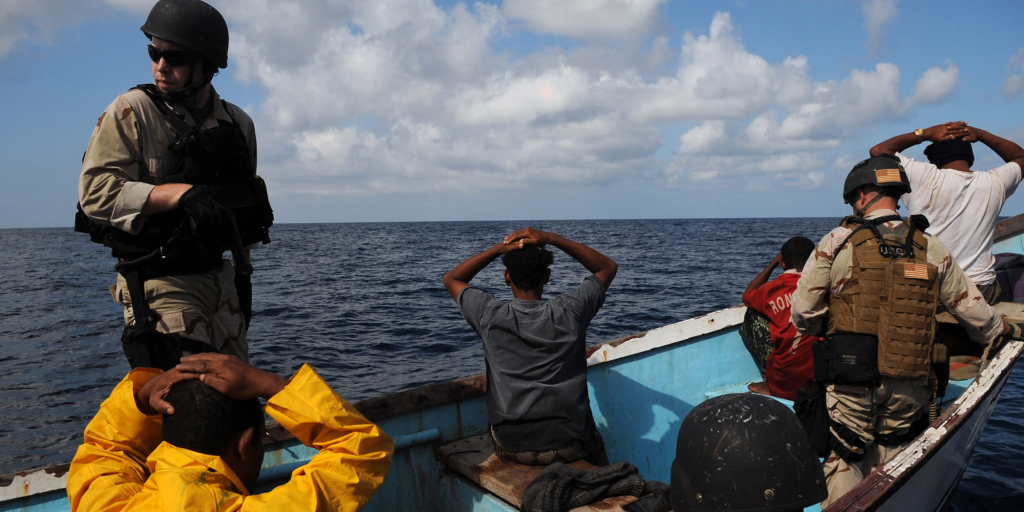
Following the bombing of the USS Cole in 2000 near Aden, and the increase in piracy off the coast of Somalia later in the first decade of the new millennium, international efforts at countering terrorism and piracy were ratcheted up dramatically. In 2003, the United States established Camp Lemonnier in Djibouti as the headquarters of the Combined Joint Task Force–Horn of Africa, as part of the global war on terror. In 2008, a series of UN Security Council resolutions permitted the use of military force within sovereign Somali waters and inland territory. EU and NATO naval operations sprawled the region, and by 2009, the Combined Task Force 151 (CTF-151) was established as a multinational naval group to stop piracy attacks in the Red Sea. Even private military contractors thrived in this increasingly militarized environment; mercenaries were happy to meet the increasing demand for their services.27 Moreover, the lines separating commercial and military obligations became so blurred that it became difficult to distinguish one from the other. For example, in April 2009, Rear Admiral William Baumgartner of the U.S. Coast Guard described “the unimpeded flow of maritime commerce” as “the lifeblood of the global economy;” the International Chamber of Shipping, on the other hand, argued that, “pirates in Somalia threaten the lives of seafarers and the security of world trade.”28 The frenzy surrounding maritime trade routes permeated multiple areas of responsibilities and interests, with commercial and security officials sounding increasingly like one another. In effect, the dual mandates of counter-piracy and counterterrorism served to unite a diverse set of actors such as transnational corporations, nation-states, supranational governing bodies, and private military contractors, all in defense of supply-chain security.
The Emirates was by no means leading these efforts, but this militarized context provided the backdrop for the proliferation of Emirati military and commercial developments. Prior to 2015, when the war began in Yemen, the Emirates invested significant resources in antipiracy operations in the Red Sea. In fact, of the thirty states participating in the Combined Task Force (CTF), four were from the GCC: Bahrain, Kuwait, Saudi Arabia, and the Emirates. According to a report from the Arab Center for Research and Policy Studies, “although not all GCC states are members of the CTF, their navies participated in, or contributed to, the military activities of the three CTF divisions—CTF-150, CTF-151 and CTF-152.”29 On a more local level, the Emirates also created partnerships with governments and paramilitaries in the Horn of Africa. In the early 2010s, the Emirates offered support for counter-piracy operations, which ultimately transformed into counterterrorism efforts aimed at defeating al-Shabaab in Somalia. In 2014, the Emirates signed a memorandum of understanding with the federal government of Somalia, training personnel and building infrastructure for the Somali army, marine police, and police forces throughout the country.30 It also developed specialized brigades of the Somali army and donated armored vehicles to Somalia’s Jubaland state.31 Moreover, the Emirates even trained and paid the salaries of the Puntland Marine Police Force, allegedly to eradicate piracy, terrorism, and illegal fishing off the coast of Somalia. According to the 2018 report from the International Crisis Group, one Emirati official estimated that as many as 10,000 Somalis had been trained and continued to receive salaries from the Emirates.32 So important were these maritime routes that the Emirates viewed the Horn of Africa as “primarily part of [its] security hinterland.”33
Concomitantly, DP World played a leading role in Emirati efforts to counter piracy in the Red Sea. From 2011 to 2014, the company hosted annual, high-level counter-piracy conferences in partnership with the Emirates’ Ministry of Foreign Affairs. Bringing together government and nongovernment stakeholders involved in counter-piracy operations in the Horn of Africa, bin Sulayem, the DP World CEO, stressed “the need for joint action both on land and at sea,” further adding that “political, economic, legal and military measures must go hand in hand to help mitigate the impact of piracy.”34 Echoing the dual nature of commercial and military obligations, the Emirati minister of foreign affairs, Sheikh Abdullah bin Zayed Al Nahyan, stated at the opening of the 2011 Counter-Piracy Conference that piracy “threatens our region’s sea lanes and indeed its livelihood as a center of commerce and trade.”35 Following the first conference in 2011, participants acknowledged the need for more than $5 million to aid the “Trust Fund to Support the Initiatives of States to Counter Piracy off the Coast of Somalia,” recognizing this commitment as a “transformative moment in ensuring a fully resourced, comprehensive public–private counterpiracy approach.”36 The conference concluded that the international community must pursue a comprehensive strategy of support to Somalia, not only assisting the Federal Authority, but also “the regional authorities of Galmudug, Puntland, and Somaliland.”37
This conclusion would prove important. Gulf financial support for Somalia (and especially its federal states) created path dependency and opened up a new space for Gulf rivalries to play out. Only half a decade after the first Counter-Piracy Conference, DP World’s contracts with these same regional authorities listed above would become a major sticking point between the Emirates and Somalia. By 2018, the federal government in Somalia had entirely banned DP World from operating in the country—a ban that has been impossible to enforce since so many of Somalia’s states govern themselves autonomously.
These conferences, which predate the war in Yemen and the current tensions between Abu Dhabi and Mogadishu, demonstrate the convergence of interests between state and capital in the Emirates. While it would be inaccurate to ascribe the Emirates’ actions in Somalia solely to DP World’s commercial interests, the extent of the firm’s partnership with its home country’s government—as embodied by these high-level conferences—indicates the ways in which Emirati imperial strategy hinges on tight-knit collaboration with private actors.
Yet trying to ascertain the precise nature of state–corporate relations in the Emirates is certainly a futile endeavor. As a country lacking necessary channels for political transparency and public accountability, it is often hypersensitive to those who seek to research such topics or criticize the government.38 But it is in the periphery, and through the logic of empire, that we are better positioned to examine the confluence of state and capital in remaking the geographies of war, trade, and state sovereignty. In this regard, the recent proliferation of infrastructural projects across the Horn of Africa serves as a key case for examining the changing politics of the Red Sea.
DP World Drops Anchor in Somalia
Following heated disputes between DP World and the government of Djibouti over accusations of bribery dating back to 2012, the latter ultimately nationalized and seized the Dolareh Container Terminal. In the wake of these struggles, Somalia became the focal point for DP World in the Horn of Africa. Most recently, the company has struck a number of deals with Somalia’s federal states for infrastructural development and port development and management. In April 2017, DP World’s subsidiary, P&O Ports, won a thirty-year concession to develop and manage the multipurpose port in Bosaso, the largest city in the autonomous northeastern Somali state of Puntland.39 The total investments are expected to be $338 million—no small figure in Puntland, which has a GDP of roughly $3 billion and an annual government expenditure of only $75 million.40 Similarly, in 2016, DP World won a thirty-year concession with an automatic ten-year extension for the management and development of a multipurpose port project at Berbera, in the Republic of Somaliland, an autonomous northern state that has declared independence from the rest of Somalia. Total investments are measured at $442 million, with DP World holding a 51 percent stake in the port, alongside 30 percent for Somaliland, and 19 percent for Ethiopia.41 The concession has also opened the door for other Gulf companies, such as Emirates-based construction company Shafa Al Nahda, which is responsible for expanding port capacity and establishing a free zone.42 Alongside these two concessions, DP World has also been in direct negotiations with other federal states in Somalia, such as South West state and Jubaland, for the development of ports and other investments.43
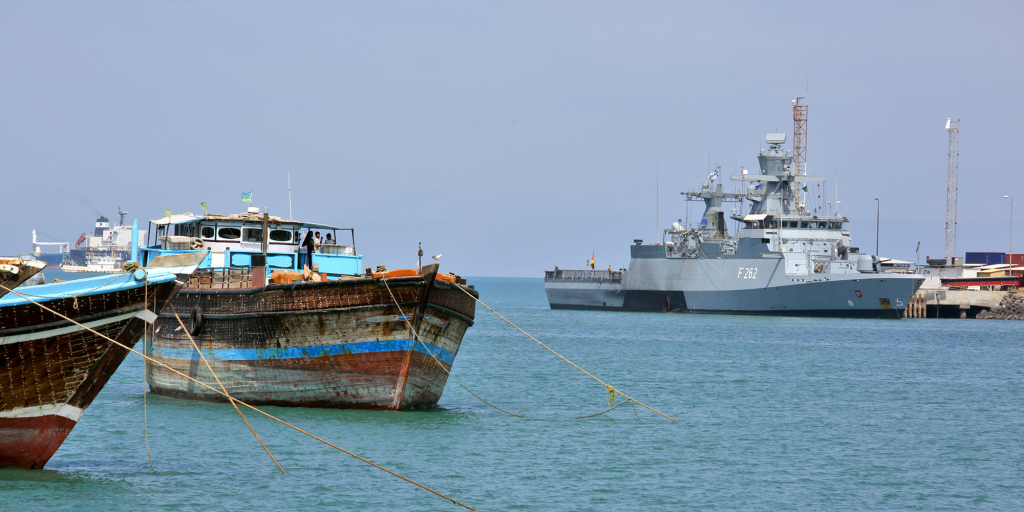
The development of these commercial ports has entailed significant military and strategic ramifications. Quickly following DP World’s deal to manage Berbera Port, the Emirates signed a twenty-five-year military agreement with the government of Somaliland to lease and refurbish the civilian airport and old military base in Berbera.44 Located on the southern coast of the Gulf of Aden, the port of Berbera was first modernized by the Soviet Union in the 1960s, where it constructed a deepwater port and carried out significant dredging.45 However, after Somalia severed ties with the Soviet Union in the late 1970s, the port underwent commercial expansion and was used by the United States military until the collapse of the Siad Barre regime in 1991. The Emirates is now extending these imperial “lineages”—DP World is now in the process of expanding the container terminal, and the Emirati military awarded a $90 million contract to Emirates-based Divers Marine Contracting in 2017 to build a naval base in Berbera. Most importantly, the new military base is located close to the shores of Yemen and was originally intended to assist in the war effort. Even though the Emirates announced in July 2019 its intention to withdraw from the war in Yemen, its occupation of the strategically positioned Yemeni archipelago of Socotra, the cementing of control over southern Yemen by Emirates-backed forces, and its military bases in Assab (in Eritrea) and Berbera ensure unprecedented control and strategic depth in the Red Sea. Given that military operations are complex logistical undertakings, commercial entities such as DP World will be further embedded in these military webs.
These relationships are symbiotic for the Emirati state and Gulf companies. Not only will deeper Emirati control over the Red Sea guarantee the smoother circulation of civilian and military resources in coastal areas; it will also allow companies such as DP World to benefit from an expanded network of existing and emerging trade routes.46 For example, Berbera Port has already signed agreements for regular service with two of the biggest container shipping lines, Maersk and PIL, thereby integrating the port into international trade routes and allowing DP World to generate further revenue.47 According to DP World, the transportation companies CMA CGM and Simatech are running biweekly lines from Jebel Ali to Berbera.48 Last year, Berbera Port served vessels coming from Dubai, China, Oman, India, and Yemen, as well as consignments of humanitarian aid from the World Food Programme and the United States Agency for International Development (USAID)—ironically, humanitarian aid made necessary by the war in Yemen that the Emirates has helped wage. Moreover, with DP World now operating six ports in South Asia, cementing control over this corner of the Indian Ocean would further enable DP World to connect Indian, African, and Middle Eastern ports.49
In Puntland, where DP World’s subsidiary, P&O Ports, operates the Port of Bosaso, Emirati commercial interests have arrived on a field that is already militarized. Unlike Berbera, the Emirates has been spearheading military efforts and security trainings in Puntland for almost a decade, most notably (as mentioned above) training and paying the salaries of the Puntland Marine Police Force (PMPF). The force was formed in 2010 to counter terrorism and piracy off the coast of Somalia. But according to a UN investigation in 2012, it had “yet to be deployed as part of a comprehensive strategy to fight piracy in Puntland.” The report also found that the force had “no basis in Puntland’s constitution or domestic legislation,” and functioned instead as “an elite force outside any legal framework . . . answerable only to the Puntland presidency.”50 As explained above, the establishment of groups such as the PMPF did not occur in a vacuum. The proliferation of anti-piracy and counterterrorism initiatives by a range of international and regional powers in the Horn of Africa provided both the real and rhetorical justifications for such paramilitary organizations.
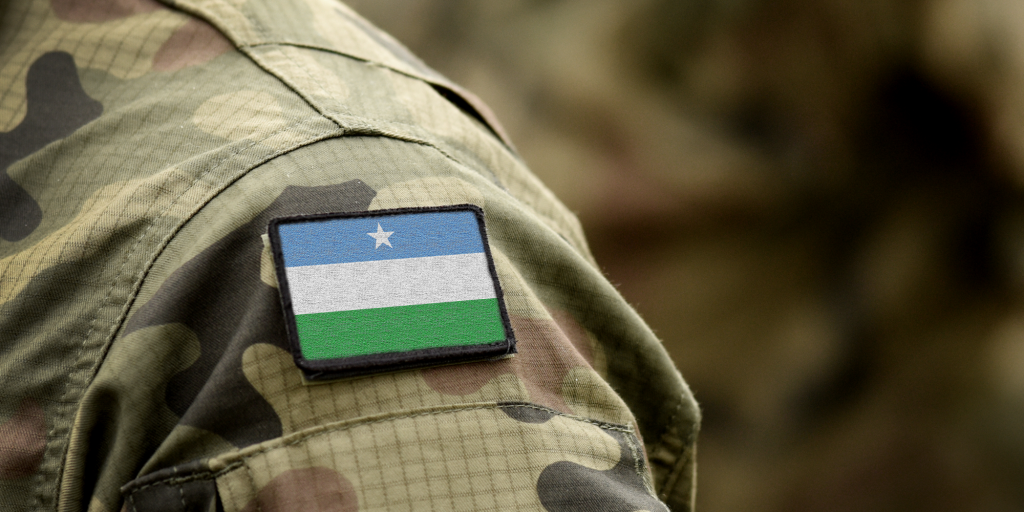
Scholar Deborah Cowen notes that, in this militarized context, “poor states neighboring Somalia are being transformed into mercenary, legal and carceral spaces for imperial powers.”51 As nearby states such as Djibouti, Sudan, and Eritrea sought to tap into counterterrorism funds, the federal states of Somalia, such as Puntland, also joined in with the help of external sponsors and private mercenary groups. In fact, while the Emirates paid the salaries of the PMPF, Blackwater founder Erik Prince, along with a former apartheid-era South African special forces officer, Lafras Luitingh, helped to actually create the PMPF. Yet these developments are not simply top-down processes. As the scholar Alex de Waal notes, “just as an earlier generation of leaders had used geostrategic rents to pursue domestic political agendas, so too counterterrorism rent was manipulated for diverse other purposes, all of them to do with consolidating power, and often unconnected with defeating terrorist groups.”52 According to a report by The Intercept, it’s unclear that the millions of dollars that Emirati intelligence officers poured into the program had perceptible results.53 Some $50 million are unaccounted for; aircrafts, helicopters, and cargo planes either went missing or were never returned, and the United Nations reported “credible” allegations of human rights violations stemming from corporal punishment. Prince’s program was shut down in 2012 following the murder of a South African mercenary by a local soldier. In fact, the local soldier—originally hired to fight piracy—was actually a relative of a pirate who had been targeted by the program.54 Regardless of the program’s effectiveness in terms of battling piracy and terrorism, the Emirates’ unequivocal and handsome support of Puntland’s security forces served to strengthen its (proto-)state capacities and regional autonomy.
The agreement with DP World’s subsidiary also undoubtedly reinforces Puntland’s pretensions to statehood and its state capabilities (the region declared its independence in 1998, but has not been recognized as independent by the international community). Like Berbera, “Puntland will benefit from an internationally recognized port operator contributing to its economic growth and trade potential,” bin Sulayem noted.55 Puntland will further integrate into world markets, and the agreement is set to assist vital state functions such as employment generation, clean drinking water provisions, mobile medical services, investments into agricultural industries, and the development of secondary and tertiary sectors through the establishment of a free zone. Yet, as it operates in an arena of established Emirati involvement, the company has become embroiled within the surrounding political landscape, sometimes in deeply destabilizing ways. Most recently, in February 2019, gunmen posing as fishermen murdered one of Bosaso Port’s executives, Paul Anthony Formsa.56 Although al-Shabaab claimed responsibility for the attack, in a leaked audio recording obtained by The New York Times, an unnamed businessman close to the emir of Qatar said that the assassination was intended to “advance Qatar’s interests by driving out its rival, the United Arab Emirates.”57 While the intentions of the attack still remain unclear and shrouded in gossip, the fact that DP World has been caught in the crossfire is indicative of the unintended consequences of Emirati imperial strategy. As many analysts have warned, the lack of a regional security strategy and the escalating maritime rivalries in the region have the potential to lead to an explosive and destabilizing situation.58
Somalia in Fragments
Mogadishu’s fractured relationships with its federal states has a long and complex history, but the most recent tensions occur against this backdrop of a militarized maritime space, the training of various paramilitary groups, the war in Yemen, and intra-GCC rivalry. While DP World’s recent agreements in Puntland and Somaliland, and possible contracts in Jubaland and South West state, may contribute to processes of nascent state formation, they have also intensified the process of state fragmentation in Somalia.
Following the June 2017 crisis in the Persian Gulf—in which Saudi Arabia, the Emirates, and their allies severed relations and imposed an economic blockade on Qatar—Somalia’s president, Mohamed Abdullahi Mohamed (also known as Farmajo), came under great pressure to cut ties with Qatar.59 But given that Somalia had been the recipient of Qatari and Turkish capital investments, budgetary support, humanitarian aid, infrastructural development, and training of security forces, Farmajo resisted Saudi and Emirati demands. Moreover, with reports that Farmajo received Qatari funds in the run-up to his election, his neutrality was viewed with suspicion by the Emirates. Relations soured, reaching their lowest point when Somali government officials confiscated $9.6 million in cash at the Mogadishu airport from an Emirati plane. Following the incident, the Emirates “suspended military cooperation with Mogadishu, extracted Emirati trainers and halted aid operations.” Only five weeks later, Farmajo travelled to Doha, “apparently cementing his ties to Qatar” and, in the eyes of many, confirming his loyalties.60
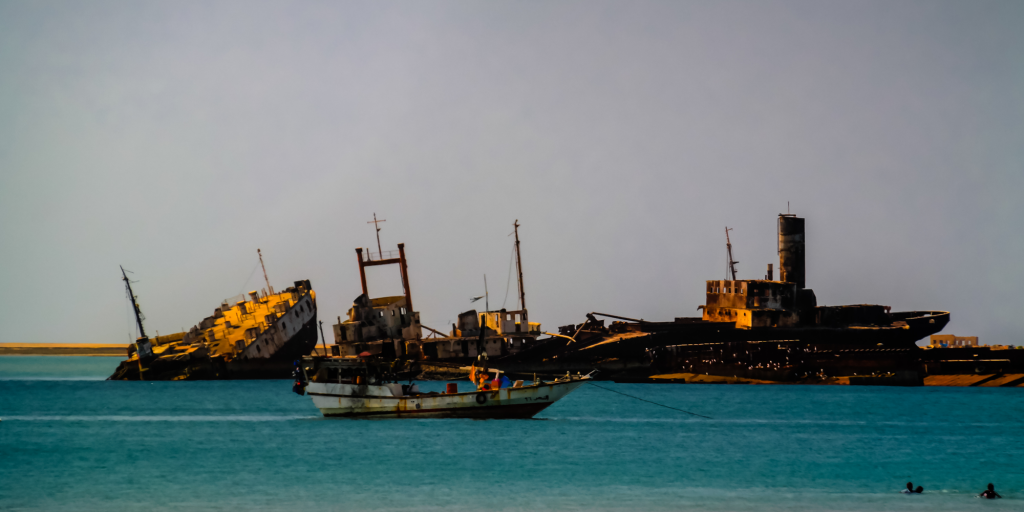
Once again, while GCC rivalries have festered in Somalia, it is private companies and infrastructural projects that are materially contributing to processes of state fragmentation and state formation in Somalia. For example, in November 2017, Farmajo signed a deal with the Qatar Development Fund for projects worth $200 million, such as major highways, rehabilitation of government buildings, and other projects in Mogadishu and the Shabelle River valley.61 Similarly, the Turkish conglomerate, Albayrak Holding, has operated the Mogadishu port since 2014. These large-scale investments, concentrated mostly in the capital, form the uneven landscape in which the current rivalries operate. Conversely, DP World’s agreements with the federal states of Somaliland and Puntland, in addition to its direct negotiations with officials from South West state and Jubaland, have further undermined the authority of Mogadishu over its federal states. According to one Somali official, the Emiratis “convened meetings for federal state leaders to undermine the national government.”62 In turn, the Somali parliament passed legislation in 2018 banning DP World from Somalia, as mentioned above. Farmajo even appealed to the Arab League, arguing that DP World’s deal with Berbera violated his country’s sovereignty.
One must be cautious of overstating these actions as symbols of state failure or fragmentation. As the 2018 report from the International Crisis Group demonstrates, Emirati–Qatarii rivalries do not neatly map onto opposite sides in Somalia—an indication that local actors have been able to play Qatar and the Emirates against each other. Emirati money has come to function as a political bogeyman for many Somali politicians when employing anti-corruption rhetoric or as a pretext to crack down on political opponents whose ties with the Emirates are unclear or tangential.63
Nonetheless, the influx of capital from Gulf states, as mediated through private companies such as DP World, has played an unprecedented role in intensifying the dual processes of state formation and fragmentation in the country. Moreover, the large, fixed nature of investments in critical infrastructures risks creating forms of path dependencies to which local political rivalries will be increasingly tethered. As such, it is important to pay attention to these longer, more durable capital investments when interpreting the precise nature of GCC rivalries and their effects on national and local politics in Somalia. Rather than separating economic and political concerns from one another, viewing them together allows us to better understand how and why such rivalries arise, and why companies such as DP World have been caught in the crossfires of Somali politics.
Privatized State Formation in Somaliland
GCC rivalries may help explain the recent fracturing of relations between Mogadishu and Somalia’s federal states, but they tell us little about what the future of these proto-states may look like. Examining DP World’s agreement to operate Berbera Port in Somaliland, however, provides an important entry point into thinking about how nascent state formation in this region is being circumscribed by Emirati imperial power and commercial interests, and their unintended consequences.
DP World’s investments may even be a sly attempt to boost Somaliland’s ambitions for independence.
Although Somaliland declared independence from Somalia in 1991, the international community has yet to recognize this status, and DP World’s investments represent a significant development in the future trajectory of the northern state. They may even be a sly attempt to boost Somaliland’s ambitions for independence.64 As noted above, Berbera Port’s integration into regional and international circuits of trade, and as a significant node in an Emirati-led military network, has important ramifications for the development of the nascent state. For example, DP World has invested significant resources in developing the Berbera Special Economic Zone. Following an agreement signed between DP World and the government of Somaliland in 2018, the zone is set to be “modelled on DP World’s Jebel Ali Free Zone and aims to attract investments, encourage trade, create new jobs and position Berbera as a new value-added gateway port for the region,” in the words of DP World’s promotional materials.65 In order to attract business, it advertises access to foreign labor, corporate tax incentives, incorporation of fully foreign-owned companies, exemptions on customs duties, and the free movement of capital. As such, it is unclear whether the project will forge forward and backward linkages with the local economy, or whether it will function as an enclave for global capital and as an external source of rent for the government and landowners.
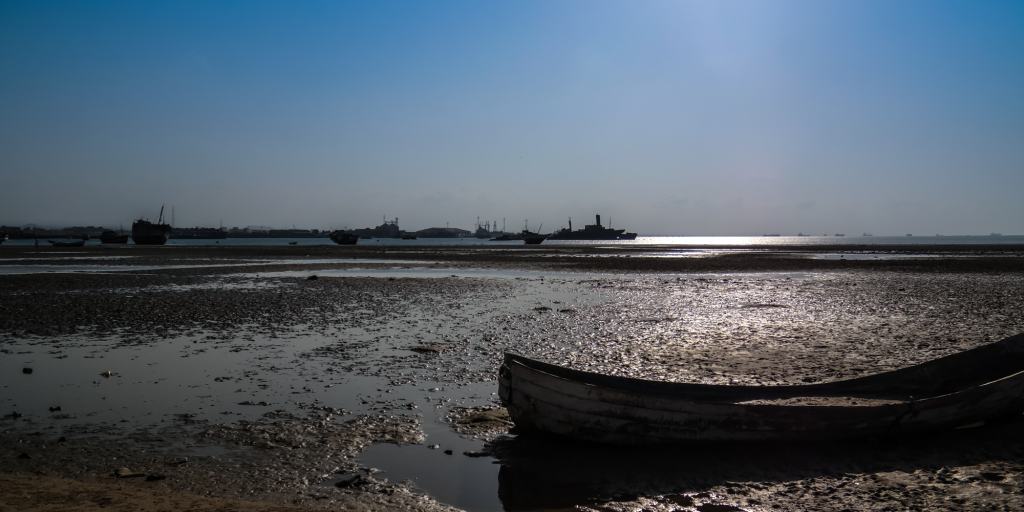
The agreement with DP World also comes as part of a broader deal with the Emirates, entailing significant implications for the wider process of state formation in Somaliland. According to Saad Ali Shire, Somaliland’s minister for foreign affairs and international cooperation, the deal will also build new roads connecting the port to the Ethiopian border, as well as funds for education and health care programs.66 For example, earlier this year, the governments of Ethiopia and Somaliland launched a $400 million road project linking Berbera Port to Ethiopia’s border town of Togochale, funded by the Abu Dhabi Fund for Development (ADFD), the emirate’s foreign aid agency.67 These investment pledges by ADFD were conditional on the exclusive twenty-five-year Emirati lease on the military base in Somaliland, thereby demonstrating the intimate links between emerging geographies of war and trade.68
DP World itself donated $1 million to upgrade and equip the Berbera Hospital, sending specialized doctors, paying their salaries, and even providing the hospital with its first gynecologist. The company also invested $1 million to upgrade the water infrastructure in Berbera, building five wells and a water connection system to be used primarily for livestock—the backbone of Somaliland’s economy. DP World is not only shaping the contours of the state through infrastructural investments, but is also by far the biggest private-sector employer in Somaliland, employing 1,300 permanent employees and 1,200 “casual laborers” in the port.69 In effect, by constructing highways, water facilities, and expanding medical care, the main features of the nascent state are, in large part, being developed by the Emirates—but through the investments of a supposedly private enterprise.
Imperial Disruptions
The influx of Emirati investments and DP World’s oversized role in carrying out state duties has had a flurry of unintended consequences. In this, it is again exhibiting the disruptive effects of an imperialist endeavor. Since the deal with DP World, the coastal areas of Berbera have witnessed rapid urbanization, with property prices as much as doubling along the waterfront.70 This has sparked a “land rush,” as diaspora capital and wealthy investors from nearby regions have flocked to the region to grab a slice of the pie.71 But some residents are wary, as poorer sections of the community face the possibility of being driven out as land speculation intensifies. Additionally, the stream of investments into property may upset the balance of clan-based politics in the region. Despite the passage of a national land law in 2001, clan ownership is considered to be the dominant form of property ownership in the country, and land disputes constitute the majority of violent incidents recorded in towns and cities, according to the Hargeisa-based Academy for Peace and Development (APD). In Berbera, the Ise Musa clan has dominated local politics since the 1990s, and changes in landownership may have a significant effect on the balance of forces in the region.
In the free zone at the port, there have been numerous accusations that the government is selling off undeveloped land that was reserved for use by the port. “It is being sold off without clear procedures and guidelines,” and often to those with close government connections, Mohamed Farah, the director of APD, reportedly said.72 Ahmed Hussein Esse, President of Abaarso Tech University in Hargeisa, went so far as to describe the situation as “land grabbing,” adding that there is now almost no public land left in Somaliland. This, however, is only one of the effects of the speculation frenzy following DP World’s contracts and dealings in the area. Land reclamation of coastal areas has entailed “dumping massive sand materials,” putting pressure on the local marine ecosystem, local residential communities, and the small fishing port.73 According to a recent report authored by an environmental consultant in Qatar, “both coastal reclamation and marine dredging, if unmanaged, will lead to subsequent losses of biodiversity, habitats, and ecosystems and potentially pose a threat to lifestyles, cultural heritage, property values, and resources.”74 Given that there is no plan, either by DP World or by the local government, to regulate and manage the effects of coastal urbanization, land reclamation, and marine dredging, it may cost Somaliland “billions of dollars to carry out frequent maintenance works,” potentially undermining its economic stability.75
DP World’s status as a port operator and the biggest private-sector employer has also given rise to controversy. According to the agreement with DP World and the government of Somaliland, DP World has the power to set, amend, levy, collect, and recover tariffs of port users. In fact, DP World is allowed to increase tariffs on a biannual basis in consultation with the government. In March of this year, the port experienced massive delays as local businesses refused to pay increased tariff payments, leaving their goods stranded at the port in an act of protest.76 Rather than addressing the grievances of local businesses, Mohamoud Hassan Saad, a Somaliland minister in charge of investment and commerce, firmly declared his support for DP World’s tax increase and issued a warning to businesses: “they must pay their outstanding dues and pick up the goods or risk paying extra fees on account of the delays.”77
Port workers entered the town chanting slogans: “We want to live, we want to eat. We cannot live with a meager salary.”
DP World’s problems with the local community in Berbera also extend to its own workers. In March 2017, workers demonstrated against wage cuts proposed by DP World, and as a result, 280 workers were laid off.78 Burning DP World flags and defying police orders, port workers entered the town chanting slogans such as, “We want to live, we want to eat. We cannot live with a meager salary.”79 In July 2019, construction workers involved in the expansion of the port also went on strike, citing lowered daily wages. Although workers were promised $30 per day, local firms subcontracted by DP World were allegedly only paying daily wages of $8.80 The laborers also criticized the company for hiring foreign workers, while locals remained idle in the town. Locals also protested that they did not have the housing and medical provisions that the firm provided to foreign workers.81 Even the head of the Berbera Port Authority, who had worked there for twenty-five years, was dismissed; many of the local truckers were left without jobs following the introduction of new safety standards; and the local workforce was screened, reduced, and disciplined.82 While the new operator has undoubtedly brought some new jobs to the town, according to local journalist Mahmoud Hasan, “if the new deals do not bring the promised prosperity to Berbera, there will be real anger.”83
A Microcosm of Emirati Expansion in the Horn
Berbera is just one city of only about 60,000 inhabitants, but its experience provides a microcosm of the kind of problems that Emirati imperial expansion has had—and will continue to have—in the Horn. For example, DP World’s actions have had an important bearing on the political economy of Berbera and governance structures in the area. In the early 1990s, following Somaliland’s declaration of independence, Muhammad Haji Ibrahim Egal was elected by clan elders and a constituent assembly to be the state’s second president. He was initially given two years to embark on the daunting task of building a viable state. At this time, Somaliland’s vital livestock trade recovered at Berbera Port, largely as a result of Saudi Arabia opening its markets to Somali meat. In order to extract revenues from this growing trade, Egal created the Berbera Port Authority in 1993, establishing it as an autonomous body directly under the president’s office, and thereby eluding political control from the legislature. According to the scholar Mark Bradbury, Egal did this without opposition because “the Sheikh and Borama conferences”—peace and reconciliation agreements in Somaliland in 1992–93—“had reaffirmed Berbera’s status as a national asset and because Berbera lies within the territory of Egal’s own clan.”84 By September 1995, the Berbera Port Authority provided Egal with an immediate revenue stream of approximately $10–15 million per year, and was by far the government’s biggest source of revenue.85
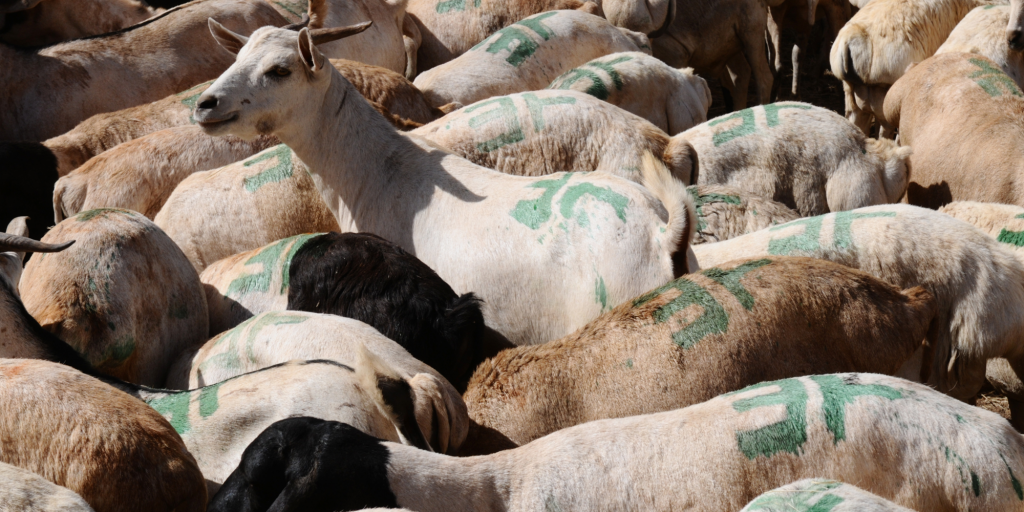
Yet, despite this largely independent source of revenue, much of Somaliland’s politics were dependent on the power and cooperation of domestic livestock traders, largely based in Berbera. In fact, de Waal caricatures the origins of the Somaliland Republic as a “profit-sharing agreement among the dominant livestock traders, with a constitution appended.”86 These were the same traders that largely funded the Sheikh and Borama conferences and demonstrated a keen interest in keeping Berbera free of conflict. They loaned the fledgling government $7 million, and Berbera’s port and business district were Somaliland’s first weapons-free zone.87 As such, the Somaliland authority, “acting de facto at the behest of the business community,” had successfully controlled the level of armed conflict and violence in the region.
This domestic social contract, however, has come under a great deal of pressure since then, and it seems that the DP World agreement will further transform state-society relations and the balance of forces in Somaliland. In the first few years of this century, the government attempted to sideline the domestic business community by imposing taxes on the private sector and making backroom deals with foreign corporations. It even tried to impose a monopoly on livestock exports. The business community successfully resisted these efforts, but it signaled the executive’s desire to seek external rents, risking a “relapse into an oligarchic crony system.”88
However, in a recent interview, de Waal noted that the new, elite business classes are more concentrated in rentier industries such as real estate, oil and gas, the new Coca-Cola factory, and telecommunications. Even Emirates-based companies with close links to the monarchy, such as the state-owned Mubadala, RAK Gas, and International Petroleum Investment Company have been engaged in oil and gas exploration activities in Somaliland.89 Likewise, domestic capital, such as the Dahabshiil Group—the largest money transfer business in Africa, headquartered in Dubai—has thrived in the changing investment climate, exerting control over large sectors of the economy, such as telecommunications, import licenses, banking, and real estate. Following this trend, it appears that the new deal with DP World has strengthened the executive and elite, rentier business classes at the expense of older livestock merchants and the majority of the national business community. In fact, the Somaliland Chamber of Commerce, which represents the national business classes, has seemingly been absent in negotiations surrounding DP World’s agreement to manage and develop Berbera Port. By contrast, with a 30 percent stake in the port, the government and well-connected business elites have been able to secure an independent and growing source of external rent without having to share political power with other sections of society.
Both DP World and the Somaliland government have emphasized the development of Berbera Port as a necessary step toward transforming the area into a regional corridor and gateway. Rather than exclusively relying on livestock and informal trade, the Somaliland government anticipates these investments to generate further commodity circulation and investments in other sectors. Yet, regardless of this economy of anticipation, the DP World investment, as it currently exists, centers largely on matters pertaining to livestock and food security in the Gulf. For example, the livestock trade between Ethiopia and Somaliland is concentrated in Togochale, the same town that will be connected to Berbera Port through a road funded by ADFD. In fact, the export of sheep and camels to the Gulf has traditionally constituted the port’s main activities and revenue generators—in 2014, earnings from livestock exports through Berbera Port exceeded $375 million, generating approximately 85 percent of Somaliland’s foreign export earnings.90
Still, it remains unclear whether livestock traders and farmers stand to benefit from the new port arrangement. The upgrades at the port, DP World’s connections to other ports in the Gulf, the company’s investments in Berbera’s water facilities, and the new highway linking Somaliland and Ethiopia will undoubtedly smooth the flow of livestock from the Horn of Africa to the Arabian Peninsula. Even the recent establishment of a joint livestock bureau between the Emirates and Somaliland is set to assist the industry in matters related to health and the regulation of livestock export. In 2016, when Saudi Arabia temporarily banned meat imports from Somalia, citing health issues, livestock traders and farmers lost access to crucial markets and a source of badly needed foreign currency. While initiatives like the joint livestock bureau may help mitigate against such instances, one must question the future of the industry under increasing Emirati control and regulation. There is no evidence to suggest that the main civil society organizations and associations have been brought into the fold.91 As such, the entrance of foreign capital into the livestock industry in Somaliland may further marginalize the power of the domestic business community and its associations. Moreover, with Arab states of the Gulf increasingly preoccupied with food insecurity, Gulf-based conglomerates have sought control over all stages of production and circulation, from farm to shelf. As Hanieh, the scholar, notes, food security discourse in the GCC “has validated state-led support of the largest capital groups involved in agribusiness activities,” with agribusiness conglomerates purchasing land and integrating into wider logistics chains.92
Today, some of the biggest players in the livestock industry are intimately linked to patterns of capital accumulation in the Gulf. Indhadeero Group, Somaliland’s largest trader and exporter of livestock, is supported by diaspora capital in Dubai. For many years, the company held a monopoly over livestock exports in a joint venture with a Saudi investor, thereby extracting millions of dollars in revenue from exports to the Saudi market. While the new joint venture and DP World’s arrival may change the landscape of livestock politics in Somaliland, it seems unlikely that domestic livestock merchants will regain the position they once held in the country. Rather, the current arrangement will likely further deepen market relations between Somaliland and the Gulf, whereby the contours of the livestock industry—and the broader economy—are to be circumscribed by the profitability and requirements of Gulf capital.
The Logic of Empire
DP World’s further expansion into this region demonstrates that Emirati imperial power actually permeates local and regional politics in ways not always perceptible to those engaged in the highest levels of statecraft. As such, we cannot fully understand the nature of Emirati power without analyzing the convergence of state and capital in the Emirates and its effects on local politics, state formation, and economic development in the periphery. However, the fact that Emirati state policy and Gulf-based capital seem increasingly powerful in molding the political topography of the region, and Somaliland in particular, does not mean that these processes can only be understood from above. Rather, the reorganization of political power, economic networks, and changing urban dynamics constitute the messy terrain in which foreign capital and Emirati policy operates. Therefore, as DP World acts increasingly more and more like a state, it is forced to confront local and regional politics, making it an undeniably political actor.
It is, of course, tempting to read the expansion of Emirati power into the Red Sea and the Horn simply as the result of GCC rivalries, great power politics, and the war in Yemen. These interpretations are unquestionably valid and the effects of dramatic port acquisition in the Red Sea on geopolitical relations are palpable. But these explanations often obscure as much as they reveal. In this framework, the shifting politics of the Red Sea appear to be driven solely by great powers pitted inextricably against one another. Preexisting rivalries and ill-defined “strategic interests” are projected onto the region in a zero-sum manner. Conflicts are understood through the lens of great power competition, often after the fact. Economic considerations are either sidelined or taken as a secondary concern, separated from larger political interests. Following the arguments laid out by Ronald Robinson and John Gallagher, the British historians of imperialism, it appears that “trade follows the flag.”
Geopolitical calculations may drive Emirati policy at the state level, but the interests of commercial entities are equally important.
As such, it is crucially important to locate these developments in a broader history of counter-piracy, counterterrorism, supply chain security, and the expansion of markets in the Gulf. Without paying attention to this broader history, it becomes increasingly difficult to understand why this recent flurry of commercial and military developments in the Red Sea is taking place in a potentially explosive manner. By focusing on commercial entities such as DP World, we can generate a better understanding of what existing Emirati power looks like in the Horn of Africa and the Red Sea. Geopolitical calculations may drive Emirati policy at the state level, but as this report demonstrates, the interests and actions of commercial entities are equally important in understanding how these policies play out on the ground. Inter-state relations are generally understood to be the most important expression of international politics; yet analyses of private companies tightly wedded to state power reveal the limits of such conventions. Logistics giants, such as DP World, operate in far more regional terms and are not confined to the same territorial logics of traditional nation-states. As such, if Emirati foreign policy seeks to control, regulate, and mediate maritime routes and territorial hinterlands around the Arabian Peninsula, the interests and actions of private companies will also shape the modalities of Emirati imperial power. Through the logic of empire, the question of whether trade follows the flag or vice versa is rendered moot. The important thing to understand is that commercial and strategic interests in the Gulf will continue to play a leading role in shaping the future of the region for years to come.
cover photo: Aerial view of a container ship in Thailand. Source: Anucha Sirivisansuwan/Getty Images
Notes
- Alex de Waal, “The Future of Ethiopia: Developmental State or Political Marketplace?,” World Peace Foundation, August 20, 2018, https://sites.tufts.edu/wpf/files/2018/08/The-future-of-ethiopia-20180817.pdf.
- For an explanation, see Ishaan Tharoor, “The Persian Gulf Crisis Explained,” Washington Post, June 6, 2017, https://www.washingtonpost.com/news/worldviews/wp/2017/06/06/the-persian-gulf-crisis-over-qatar-explained/.
- Mike Davis, “Fear and Money in Dubai,” New Left Review 41 (2006): 47.
- DPI is a so-called FZE, or free-zone establishment, a type of limited liability company established in an Emirati free zone.
- Andrew Critchlow, “Dubai Inc. Is in Need of Change at the Top,” Wall Street Journal, October 21, 2009, https://www.wsj.com/articles/SB125605837214896881.
- “DP World PLC,” MarketScreener, accessed November 15, 2019, https://www.marketscreener.com/DP-WORLD-PLC-6500032/company/.
- DP World, “Who We Are,” accessed November 11, 2019, https://www.dpworld.com/who-we-are/leadership; Andrew Woods, “Architects of a Brave New World—Inside Nakheel,” Construction Global, April 11, 2018, https://www.constructionglobal.com/facilities-management/exclusive-architects-brave-new-world-inside-nakheel.
- Simeon Kerr, “Bin Sulayem Exit Ends Tumultuous Era,” Financial Times, December 13, 2010, https://www.ft.com/content/b722858a-06ec-11e0-8c29-00144feabdc0.
- Robin Wigglesworth, “Dubai Names New Chair for Troubled Group,” Financial Times, December 13, 2010, https://www.ft.com/content/cd6769c2-060c-11e0-976b-00144feabdc0.
- In the year ending November 2019, DP World acquired Unifeeder (€660 million), P&O Ferries (£332 million), partnered with Virgin Hyperloop, and has either bought port operators or won concessions all across Africa, the Middle East, India, and Latin America.
- Kristian Coates Ulrichsen, The United Arab Emirates: Power, Politics and Policy-Making (Abingdon, UK: Routledge, 2016).
- “Somalia and the Gulf Crisis,” International Crisis Group, June 5, 2018, https://www.crisisgroup.org/africa/horn-africa/somalia/260-somalia-and-gulf-crisis.
- Adam Hanieh, “Ambitions of a Global Gulf,” Middle East Report 289 (Winter 2018), https://merip.org/2019/03/ambitions-of-a-global-gulf/.
- Sharmila Dhal, “How UAE’s Food Security Agenda Will Impact You,” Gulf News, January 26, 2019, https://gulfnews.com/uae/how-uaes-food-security-agenda-will-impact-you-1.61574013.
- “World Economic Outlook Database,” International Monetary Fund, October 2019, https://www.imf.org/external/pubs/ft/weo/2019/02/weodata/index.aspx.
- “Doraleh—Djibouti,” DP World, accessed November 11, 2019, https://www.dpworld.com/what-we-do/our-locations/Middle-East-Africa/Djibouti/doraleh.
- Hawa Ismael and George Vandyck, “Forecasting Container Throughput at the Doraleh Port in Djibouti through Time Series Analysis,” Applied Mechanics, Mechatronics and Intelligent Systems—Proceedings of the 2015 International Conference (Singapore: World Scientific, February 2016), 341.
- Aaron Maasho, “Ethiopia to Take Stake in Port of Djibouti, Its Trade Gateway—State Media,” Reuters, May 1, 2018, https://www.reuters.com/article/ethiopia-djibouti/ethiopia-to-take-stake-in-port-of-djibouti-its-trade-gateway-state-media-idUSL8N1S81QA.
- “We need Eritrean ports,” Zenawi told Alex de Waal in an undated conversation. “We will reach the capacity of Djibouti soon and we need to diversify our access to the sea.” See de Waal, “The Future of Ethiopia,” 8.
- Bernd Debusmann Jr, “DP World Chairman Says 2019 Will Be Challenging,” Arabian Business, February 4, 2019, https://www.arabianbusiness.com/politics-economics/412540-dp-world-chairman-says-2019-will-be-challenging.
- “Jebel Ali Port,” DP World, Accessed November 15, 2019, https://www.dpworld.com/what-we-do/our-locations/United-Arab-Emirates/UAE/dp-world-Jebel-ali.
- Rafeef Ziadah, “Constructing a Logistics Space: Perspectives from the Gulf Cooperation Council,” Environment and Planning D: Society and Space 36, no. 4 (2018): 672.
- Simeon Kerr, “DP World to Buy Jebel Ali for $2.6bn from Dubai World,” Financial Times, November 13, 2014, https://www.ft.com/content/7b9ddc22-6b32-11e4-ae52-00144feabdc0. As bin Sulayem, the CEO, put it: “Acquiring a strategically located asset integral to Jebel Ali’s continued success enhances our competitive advantage and aligns with our strategy of providing port-centric integrated logistics solutions at key gateway locations.” See “DP World Completes Jebel Ali Free Zone Takeover,” World Maritime News, March 17, 2015, https://worldmaritimenews.com/archives/154971/dp-world-completes-jebel-ali-free-zone-takeover/.
- Sean Cronin, “DP World Rejects Yemen Port Claim,” National, June 21, 2012, https://www.arabianbusiness.com/dp-world-rejects-yemen-port-allegations-462858.html.
- Alex de Waal, “Pax Africana or Middle East Security Alliance in the Horn of Africa and the Red Sea?,” World Peace Foundation Occasional Paper no. 17, January 2019, https://sites.tufts.edu/reinventingpeace/files/2019/01/Pax-Africana-or-Middle-East-Security-Alliance-finaL-2.pdf, 14.
- Johan Mathew, Margins of the Market: Trafficking and Capitalism across the Arabian Sea, (Berkeley: University of California Press, 2016). As historian Michael Kempe notes: “The exercise of maritime policing functions was here inseparable from the effort to gain political hegemony.” Kempe, “‘Even in the Remotest Corners of the World’: Globalized Piracy and International Law, 1500–1900,” Journal of Global History 5, no. 3 (2010), 369.
- Deborah Cowen, The Deadly Life of Logistics: Mapping Violence in Global Trade (Minneapolis: University of Minnesota Press, 2014), 157.
- Cowen, The Deadly Life of Logistics, 135.
- Afyare Elmi and Said Mohammed, “The Role of the GCC Countries in Ending Piracy in the Horn of Africa,” Arab Center for Research and Policy Studies, September 2016, https://www.dohainstitute.org/en/lists/ACRPS-PDFDocumentLibrary/The_Role_of_the_GCC_in_Ending_Piracy_in_the_Horn_of_Africa_September_2016.
- International Crisis Group, “Somalia and the Gulf Crisis,” 11.
- Ibid., 11.
- Ibid., 4.
- de Waal, “Pax Africana,” 12.
- “Regional Integration Key to Maritime Security, Say Industry Experts,” Zawya, May 7, 2015, https://www.zawya.com/mena/en/press-releases/story/Regional_integration_key_to_maritime_security_say_industry_experts-ZAWYA20150507142624/.
- Elmi and Mohammed, “The Role of the GCC Countries,”
- “Final Declaration of the United Arab Emirates Ministry of Foreign Affairs High-Level Counter-Piracy Conference 2011, Co-Organised with Global Ports Operator DP World, April 18–19, 2011,” accessed November 11, 2019, downloadable as a PDF at https://www.defense.gouv.fr/content/download/172565/1862292/file/Final%20Declaration,%20Conf%C3%A9rence%20de%20Dubai%20sur%20la%20lutte%20conter%20la%20piraterie%20(%C2%AB%20Dubai%20I%20%C2%BB),%2018-19%20avril%202011.pdf.
- Ibid.
- The case of Matthew Hedges is instructive. Hedges is a British doctoral student interested in Emirati foreign policy. He was arrested and placed in solitary confinement for almost six months following his two-week research trip to the Emirates. Less publicity has been given to the arrests of Emirates-based activist Ahmed Mansoor, along with four other Emiratis (known as “The United Arab Emirates Five”). Mansoor voiced his opposition to the Emirates government and was detained in March 2017. He remains in prison.
- Anthony McAuley, “P&O Ports to Develop in Puntland,” National, April 6, 2017, https://www.thenational.ae/business/p-o-ports-to-develop-in-puntland-1.64351.
- “Puntland Facts and Figures, 2012–2017,” Puntland State of Somalia, Ministry of Planning and International Cooperation, 2018, http://pl.statistics.so/wp-content/uploads/2019/04/Puntland-Facts-and-Figures-2017-Year-book-2018-1.pdf, 21–23.
- Charlie Mitchell, “DP World Launched $442m Port Expansion in Somaliland,” National, October 11, 2018, https://www.thenational.ae/business/economy/dp-world-launches-442m-port-expansion-in-somaliland-1.779605.
- Neha Bhatia, “Dubai’s Shafa Al Nahda Outlines Staffing Plan for DP World Contract,” Construction Week Online, October 29, 2018, https://www.constructionweekonline.com/article-50588-dubais-shafa-al-nahda-outlines-staffing-plan-for-dp-world-contract. The president of Somaliland recently announced that the Emirates is no longer constructing a military airport, and that it will be converted into a civilian airport.
- International Crisis Group, “Somalia and the Gulf Crisis,” 15.
- Matina Stevis-Grindeff, “Middle East Power Struggle Plays Out on New Stage,” Wall Street Journal, June 1, 2018, https://www.wsj.com/articles/global-powers-race-for-position-in-horn-of-africa-1527861768?ns=prod/accounts-wsj; Nizar Manek, “U.A.E. Military Base in Breakaway Somaliland to Open by June,” Bloomberg, November 6, 2018, https://www.bloomberg.com/news/articles/2018-11-06/u-a-e-military-base-in-breakaway-somaliland-seen-open-by-june.
- “Berbera Port Facilities: Somali Republic,” Central Intelligence Agency, February 22, 1966 (declassified September 10, 2006), https://www.cia.gov/library/readingroom/docs/CIA-RDP78T05929A001400060006-4.pdf.
- Rafeef Ziadah, “The UAE and the Infrastructure of Intervention,” Middle East Report 290 (Spring 2019), https://merip.org/2019/07/the-uae-and-the-infrastructure-of-intervention/.
- “2.1.2 Somalia Port of Berbera,” Logistics Capacity Assessment, July 30, 2018, https://dlca.logcluster.org/display/public/DLCA/2.1.2+Somalia+Port+of+Berbera.
- “Berbera Special Economic Zone,” DP World, July 2018, http://warshiil.com/wp-content/uploads/2018/07/Berbera-SEZ-Somaliland-DP-World-Presentation-July-2018.pdf.
- In India, DP World has also been working to develop “hyperloop” technology, and has partnered with the National Investment and Infrastructure Fund to invest in infrastructure across the country.
- “Report of the Monitoring Group on Somalia and Eritrea Pursuant to Security Council Resolution 2002 (2011),” United Nations, June 27, 2012, https://fas.org/man/eprint/semg.pdf, 138.
- Cowen, The Deadly Life of Logistics, 158.
- Alex de Waal, The Real Politics of the Horn of Africa: Money, War and the Business of Power (New York: Wiley, 2015), 182.
- Matthew Cole, “The Improbable Comeback of Erik Prince,” Intercept, May 3, 2019, https://theintercept.com/2019/05/03/erik-prince-trump-uae-project-veritas/.
- Ibid.
- “P&O Ports Wins 30-Year Concession for Port of Bosasso in Puntland,” P&O Ports, April 12, 2017, http://www.poports.com/media/po-ports-wins-30-year-concession-for-port-of-bosasso-in-puntland.
- Elias Biryabarema, “Gunmen Kill Dubai-Owned P&O Ports Executive in Somalia’s Puntland,” Reuters, February 4, 2019, https://www.reuters.com/article/us-somalia-security-p-o/gunmen-kill-dubai-owned-po-ports-executive-in-somalias-puntland-idUSKCN1PT0IO.
- Ronen Bergman and David K. Kirkpatrick, “With Guns, Cash and Terrorism, Gulf States Vie for Power in Somalia,” New York Times, July 22, 2019, https://www.nytimes.com/2019/07/22/world/africa/somalia-qatar-uae.html.
- David Shinn, “In Red Sea Region, Competing Outside Powers Complicate U.S. Interests,” United States Institute for Peace, December 19, 2008, https://www.usip.org/publications/2018/12/red-sea-region-competing-outside-powers-complicate-us-interests.
- International Crisis Group, “Somalia and the Gulf Crisis,” 1.
- Ibid., 2.
- “Qatar Supports Somalia with Projects Worth $200m,” Middle East Monitor, November 29, 2017, https://www.middleeastmonitor.com/20171129-qatar-supports-somalia-with-projects-worth-200-million/; International Crisis Group, “Somalia and the Gulf Crisis,” 6.
- International Crisis Group, “Somalia and the Gulf Crisis.”
- Ibid., 10.
- As two journalists recently put it in Foreign Policy: “The infusion of Emirati money means a lot more than being able to accommodate bigger ships and process more containers. For many, this set of investments is being viewed as an accelerant for the territory’s attempts to achieve formal independence from Somalia.” Matt Kennard and Ismail Einashe, “For Somaliland and Djibouti, Will New Friends Bring Benefits?,” Foreign Policy, March 19, 2019, https://foreignpolicy.com/2019/03/19/somaliland-somalia-horn-of-africa-djibouti-military-oil-uae-qatar-berbera-port/.
- DP World, “Berbera Special Economic Zone.”
- Stevis-Grindeff, “Middle East Power Struggle Plays Out on New Stage.”
- Kenneth Mwenda, “US $400m Road Project Linking Ethiopia to Somaliland’s Berbera Port Kicks Off,” Construction Review Online, April 5, 2019, https://constructionreviewonline.com/2019/03/us-400m-road-project-linking-ethiopia-to-somalias-berbera-port-kicks-off/.
- Hanieh, “Ambitions of a Global Gulf.”
- “Documentary: DP World–Berbera Delivering Sustainable Development,” Horn Cable TV, published to YouTube, Dec 25, 2018, https://www.youtube.com/watch?v=bzAyPia-58s.
- Stevis-Grindeff, “Middle East Power Struggle Plays Out on New Stage.”
- Tom Gardner, “Multi-Million Dollar Deal for Somaliland’s Historic Port Sparks Land Rush,” Reuters, April 4, 2017, https://www.reuters.com/article/us-somaliland-landrights-port/multi-million-dollar-deal-for-somalilands-historic-port-sparks-land-rush-idUSKBN17624B.
- Mohammed Ibrahim Abdi, “Dredging and Reclamation of Berbera Port, Somaliland,” undated, accessed November 11, 2019, http://berberanews.com/wp-content/uploads/2018/01/Dredging-Reclamation-of-Berbera-Port-Somaliland-vmia.docx.pdf, 2.
- Ibid., 3.
- Ibid., 4.
- “Tax Hike Sparks DP World Berbera Protest,” Port Strategy, March 18, 2019, https://www.portstrategy.com/news101/world/africa/tax-hike-sparks-dp-world-berbera-protest.
- Ibid.
- Gardner, “Multi-Million Dollar Deal for Somaliland.”
- “Somaliland: Berbera Port Workers Revolt against DP World Management Strategies,” Somaliland Sun, March 12, 2017, http://www.somalilandsun.com/somaliland-berbera-port-workers-revolt-against-dp-world-management-strategies/.
- “Somaliland: Construction Workers Have Gone on Strike over Low Wages,” Somaliland Standard, July 11, 2019, https://somalilandstandard.com/somaliland-construction-workers-have-gone-on-strike-over-low-wages/; “Market Update Somalia,” Food and Agriculture Organization of the United Nations, via ReliefWeb, March 21, 2019, https://reliefweb.int/sites/reliefweb.int/files/resources/Market-Data-Update-February-2019.pdf.
- “DPWOWRD” [sic], published to the YouTube channel Hadhwanaag News, July 11, 2019, https://www.youtube.com/watch?v=FhuejKk6ULE&fbclid=IwAR3WGa2CzS9qnbsaltVvif-pSxZhF7evmyMNNVRYJtBxthWjiQQ47SS8M2I.
- Finn Stepputat and Tobias Hagmann, “Politics of Circulation: The Makings of the Berbera Corridor in Somali East Africa,” Environment and Planning D: Society and Space 37, no. 5 (2019): 794–813.
- Gardner, “Multi-Million Dollar Deal for Somaliland.”
- Mark Bradbury, Becoming Somaliland (Bloomington: Indiana University Press, 2008), 111.
- de Waal, Real Politics of the Horn of Africa, 137.
- Ibid., 136.
- Ibid., 137.
- Ibid., 140.
- Odindo Ayieko, “Somaliland: Making Do with What They Have,” East African, July 14, 2019, https://www.theeastafrican.co.ke/news/africa/Somaliland-Making-do-with-what-they-have/4552902-5195354-2tncfk/index.html.
- “Livestock Sector Guide,” Somaliland Biz, accessed November 11, 2019, http://www.somalilandbiz.com/sector-guides/livestock/.
- These include the Livestock Export Association, Meat and Milk Association, Somaliland Veterinary Association, and the United Livestock Professionals of Somaliland Association.
- Adam Hanieh, Money, Markets, and Monarchies: The Gulf Cooperation Council and the Political Economy of the Contemporary Middle East, vol. 4 (Cambridge, UK: Cambridge University Press, 2018), 118.
